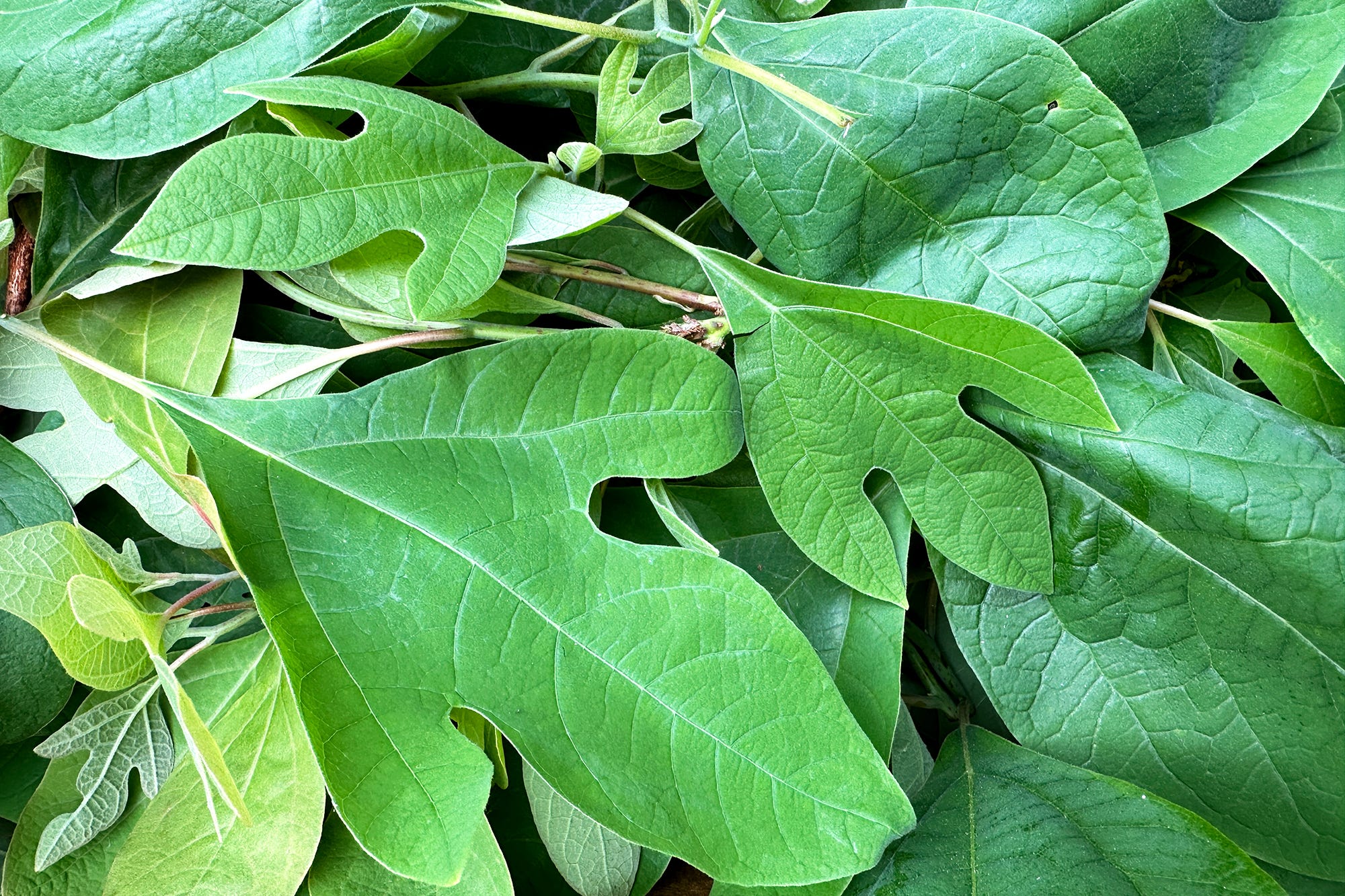Sassafras
A native plant partially banned by the FDA, but worth another look.
I only know of the plant sassafras (Sassafras albidum) because it, at least used to be, an ingredient for root beer, but if you asked me what it looked like, where it’s from or what part of the plant is edible two years ago, I would have nothing to tell you. Then, when I moved to the New York countryside, I started seeing these strange lobed leaves on small saplings growing in a patch of forest to one side of my house.
Growing across much of eastern North America from southern Canada to Central Florida, sassafras is not uncommon. Every part of the plant was and still is used by native communities for its culinary and medicinal values, though exploitation of it during the colonial period and the 1976 ban by the FDA of safrole, a chemical found within it (that could have harmful properties if enough is consumed, plus can be used to make the hallucinogen MDA), has led to the decline in its use in gastronomy. Sassafras can be legally sold, however, the safrole needs to be removed, which leads to additional sweeteners being added. Many substances banned by the United States FDA that have traditional culinary uses are usually based on outdated health studies (refer to my story on Tonka beans, for example), and rarely are they worse for you than the industrial ingredients they are replaced with.
With so much wild sassafras growing around me, I have started experimenting with the plant and looking to others for advice. I’m surprised at how many different uses it has.
Rob Connoley, avid forager and chef of Bulrush in St. Louis, Missouri is experimenting with using it as a vegan thickener, but he also just eats it raw.
In Danny Childs’ forthcoming book Slow Drinks, he makes a root tea and adds a ginger bug to it to make homemade root beer, which he will then mix with Fernet-Branca in cocktails at The Farm and Fisherman Tavern in Cherry Hill, New Jersey.
Keep reading with a 7-day free trial
Subscribe to New Worlder to keep reading this post and get 7 days of free access to the full post archives.


